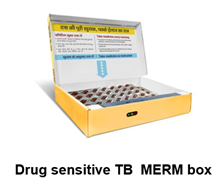Innovative Technology Solutions that can help Improve TB Treatment Adherence
Challenges of Traditional Methods
More traditional methods of promoting TB treatment adherence, including Directly Observed Therapy (DOT)1, are resource and time intensive and hence have proven to be inefficient and ineffective in improving adherence and treatment completion. Several aspects of these methods actually created obstacles for treatment adherence. In the case of facility-based DOTS, the need for patients to travel to the facilities was one such obstacle, as time constraints, disease-related social stigma, resource issues, and privacy dissuaded patients from making the journey.
Multiple studies prove that TB cure was low with self-administration, and found no substantial improvements from direct observation2. Studies that compared DOTS at home and DOTS at health facility noted that there was little or no difference in cure or treatment completion3. The DOTS approach on its own failed to offer a solution to poor adherence in people taking TB medication.
Technology interventions are replacing the need for “direct physical” treatment observation
Several versatile innovative technologies have emerged over the years to help solve the problems traditional approaches faced in improving treatment adherence, and are replacing the need for “direct physical” observation. These new solutions remind patients to take their medicine, facilitate patient-centric observation, and provide healthcare workers with accurate, real-time, and detailed dosing histories for people on TB treatment, while eliminating the need for patients to travel to a facility or reducing the need for direct observation.
These new technological solutions face other challenges, however. ‘AICure’, ‘Proteus’, ‘PIllpack’, ‘Embryyo’, Ingestible sensors, and other innovative solutions face questions about their affordability, feasibility for scale-up in resource-limited and high TB burden settings (including supply chain systems), user acceptance, accuracy, and effectiveness.
While Video Observed Treatment (VOT), a derivation of DOT where observation of dose taking is achieved with real-time video and/or video recording, is a promising innovation, its high cost and infrastructure requirements prohibit its large-scale use.
99DOTS and MERM are two technologies which have achieved significant success…

There was a need to break through the traditional DOTS setup and offer a decentralized and differentiated care to patients. 99DOTS (developed by Everwell Health Solutions) and MERM (developed by Wisepill technologies) are two such innovations which have achieved significant success in making patients the custodians of their medication and responsible for adherence. These technologies provide real-time notifications displayed at the dashboard and monitored by the provider, reducing the need for frequent patient visits.
Two technologies have been tested for scale-up in resource-limited and high-TB-burden settings (India and China) and have generated evidence backing their feasibility, user acceptance, accuracy and effectiveness: 99DOTS and Medication Event Reminder Monitoring Systems (MERM) such as Electronic Dose Monitors.
- 99DOTS: 99DOTS is an unobtrusive, inexpensive adherence monitoring approach currently being piloted on a large scale in India. Patient medications (pill blisters) are packaged in a custom, secondary envelope with a series of unpredictable, hidden phone numbers that are revealed each time a patient takes his/her medication. Patients are asked to call the revealed numbers to let healthcare workers know that they have taken their medication. The use of these unpredictable, hidden numbers is intended to increase the accuracy of self-reported information by confirming that the medication is ‘in hand.’ This technology is low-cost (less than USD 5 per patient for 6 months) and when scaled up, has the potential to be even less expensive.
- Electronic Dose Monitors: The ‘evriMED’ device is a robust and adaptable electronic dose monitor and has been deployed and evaluated in China and India. Pill blisters (of varying sizes/shapes) can be stored in the device and every time it is opened, data is sent to a server, permitting remote electronic ‘observation’ of treatment adherence. Audio and visual reminders of both dosing and refill can also be enabled/disabled on certain device models to remind patients to regularly take their medication and/or return to the clinic for examination or refill.
These technologies can facilitate the following functionalities and benefits:

- Help with forgetfulness/dosage confusion: Monitor-generated reminders and labels/pictograms address dose confusion and forgetfulness, a leading cause of nonadherence in DS-TB:
- Remind patients daily to take TB medications
- Remind patients to refill their TB medications each month
- Print out detailed patient-specific dose histories to help providers counsel patients to improve adherence Decentralised Care: Technologies replace traditional, facility-based DOT and provide TB patients custody of their medications. However, their self-administration is electronically observed and their detailed dose histories electronically compiled, thereby facilitating the goal of “patient-centred care”. Reduced Financial Burden: Self administration therapy reduces the financial burden incurred by patients from frequent visits to health facilities. Improved persistency of treatment: Patients taking drugs more regularly and are more likely to continue treatment. Such technologies provide a more patient-friendly approach to monitoring while giving providers information to counsel patients to remain on treatment. Better health outcomes: Improved treatment completion and adherence leads to better health outcomes (being confirmed in China study); potentially limiting the development of resistance and reducing transmission. Triage (in low and high risk) and Differentiated Care: Differentiated care is defined as unique screening and intervention approaches for patients with different levels of risk. Electronic monitoring can continuously identify those patients who are non-adherent, thus permitting focused intervention. Enhanced Counselling: Enhanced patient counselling (arising from dosing history-driven) and feedback can positively impact non-adherence regardless of the cause. More efficient use of resources: Lower cost to monitor patient during treatment. Adherence data enables providers to differentially invest resources efficiently towards non-adherent patients to improve treatment persistence. Better development data: Adherence data in clinical trials help build understanding of why new drug regimens succeed or fail and help in the planning and development of new regimens and their TPP’s etc.
IQVIA has supported implementation and outcome evaluation for these technologies in India
IQVIA is the implementation partner for these technologies in India and has been supporting Bill & Melinda Gates Foundation-funded India program with procuring, implementing and evaluating the rollout of 99DOTS and evriMED adherence technologies in India. IQVIA’s role has spanned a wide range of functions that help enable the use of these technologies, including liaising with manufacturers for procurement of appropriate adherence technologies for specific use-case settings in the public and private sectors, the development of a non-disruptive and scalable mechanism or “implementation pathway” that would enable the technologies to piggy back on existing operations, the establishment of a supply chain distribution mechanism, training and diagnostic support, and capacity-building of key stakeholders in the public and private sectors as part of its sustainability strategy.
Thanks to these successful pilots, the program has been expanded to scale up its role in MERM deployment in India to over 2,000 patients across 5 states and 12 cities.
Multiple evaluation studies have also been conducted across India for 99DOTS and China for EvriMED.
- Accuracy, patient and provider acceptance, and impact on adherence have been evaluated for MERM (45%4 improvement in medication adherence observed in medication monitor cohort (reminder and data-driven differentiated care) versus standard of care.
- 99DOTS technology has been evaluated for feasibility, user acceptability, potential positive impact on patients and providers and persistence. It has now been adopted for national scale roll out in India
WHO Guidelines for DS-TB Treatment
As a result of growing evidence these technologies, WHO released a comprehensive update on “Guidelines for DS-TB Treatment,” which included several important points about the importance of TB treatment adherence, the impact of various adherence interventions, and the importance of digital technologies in supporting the implementation of the End TB Strategy. Most importantly, the guidelines contain the first-ever WHO evidence-based recommendations on the use of electronic medication monitors to help patients adhere to TB medication and deliver TB care.
Key Learnings
The following key learnings were collated from IQVIAs experience in India. Leveraging these key learnings to drive efficiencies in the current project is a critical part of our overall strategy:
- No single size fits all strategy: It is critical to understand the in-country drug form factor, size, number of drugs per use case, expiry cycle, refill frequency etc. for all use cases like adult DSTB, paediatric DSTB, DRTB in order to customize the solution to meet in-country needs.
- Early buy-in from key stakeholders: Getting early consensus from countries on target implementation sites, target patient load and technology numbers is critical to build a robust supply chain distribution model. This is because the processes involved in securing country-specific regulatory compliances and customs clearances can be time-consuming.
- Plan for dependencies on supporting non-health ecosystem componets as well: Understanding an in-country technical infrastructure will be critical in driving linkages with appropriate telecom partners, building innovations for a continuous patient and staff engagement model.
- Role of local TB office staff is critical in effective roll-out: Since drugs and adherence solutions come from different supply chain routes, training the staff on the final product packaging and assembly is important to ensure the patient gets a complete end product in good condition. Training staff on their roles, responsibilities and patient education is key to clearly understanding the solution, usage and reporting.
- Plan for transition and sustainability from Day 1: Through our India experience, we have realized that supply chain for MERM technology in particular is complex. This is because it involves the acquisition and provision of a mobile device with multiple components for a temporary and limited purpose. In view of this, it is critical to put in place transition plans for procurement of the technologies by the Government and/ or other partners and enable local manufacturing so that the adoption and continued use of technology is sustainable.
- Piggy back on existing initiatives as much as possible in private sector: In the private sector, the 3Rs are important to focus on – Retention, Relationship, and Revenue. To effectively engage and get the private sector healthcare invested in adherence technologies for TB management, there is a need to identify a model that ensures patient retention and enhances and preserves the revenue stream of the provider without disrupting the relationship between the patient and the provider. The adherence model should be able to piggy back on the existing patient-provider relationship by identifying those patients who are most at risk of treatment interruption/discontinuation. This in turn can ensure relatively better retention in care and preservation of provider revenue stream. The private sector also has an established distribution system in terms of stockists and chemists that should be leveraged instead of building new supply chain systems.
1 ‘DOTS’ is a strategy, endorsed by the WHO, to improve adherence by requiring health workers, community volunteers or family members to observe and record patients taking each dose
2 Karumbi J, Garner P. Directly observed therapy for treating tuberculosis. Cochrane Database of Systematic Reviews 2015, Issue 5. Art. No.: CD003343. DOI: 10.1002/14651858.CD003343.pub4.
3 Ibid
4 Liu X, Lewis JJ, Zhang H, Lu W, Zhang S, Zheng G, et al. Effectiveness of electronic reminders to improve medication adherence in tuberculosis patients: a cluster-randomised trial. PLoS Med. 2015;12(9):e1001876





















